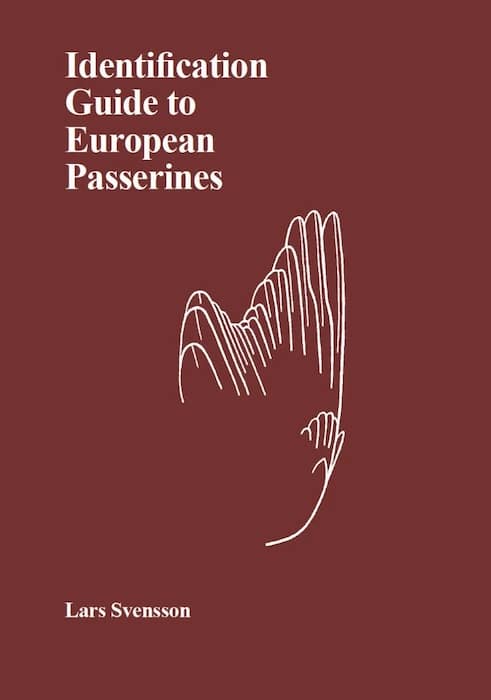| Lars Svensson | Lullula Fölag | 2023 | Fifth Revised Edition | Paperback | 448 Pages | ISBN: 9789198516685 | £19.99p |

The Publisher’s View:
This is the 5th edition of the leading guide for European bird ringers, fully revised and enlarged. Identification Guide to European Passerines now treats 267 species, 38 more than in the fourth edition. The taxonomy and sequence have been updated and the entire text has been revised and expanded. The book features numerous new or improved drawings, in total now almost 500. The guide offers detailed advice on ageing and sexing, and a summary of moult strategy for each species. The brief accounts of subspecific variation and distribution ranges are based largely on the author’s own assessment of large quantities of museum specimens.
The Author: Lars Gunnar Georg Svensson is an influential Swedish ornithologist who specialises in the identification of passerine birds. In 2008, he published a paper on the poorly known Large-billed Reed-warbler (Acrocephalus orinus), which “dramatically changed ornithological perception of the Large-billed Reed Warbler“. He is best known for his contributions to Collins Bird Guide.
Guest Reviewer’s View:
When I started ringing in the 1980s the first thing I bought, along with ringing pliers, was a copy of Svensson’s Identification Guide to European Passerines. This was the essential guide to the ageing and sexing and in the hand identification of all passerines occurring in Europe plus some species which might occur. (It does not cover American species).
You get a comprehensive source of information illustrated with the author’s own line drawings where appropriate. The book was updated in 1992 and despite advances in knowledge has remained the go-to book.
Nowadays, there is a much wider range of sources of information available than back in the 1980s, but the new 5th edition gathers the essential details into a concise and authoritative text. The book is not an illustrated field guide, but is filled with details to enable identification, ageing and sexing of 267 species of passerines recorded, or likely to occur, in Europe. Because of this it is also of value to the non-ringer who can use it to work out more detail about their observations.
I have already found my copy to have added extra detail to my ringing.
Ian Hunter – Lead Ringer, Sandwich Bay Bird Observatory
